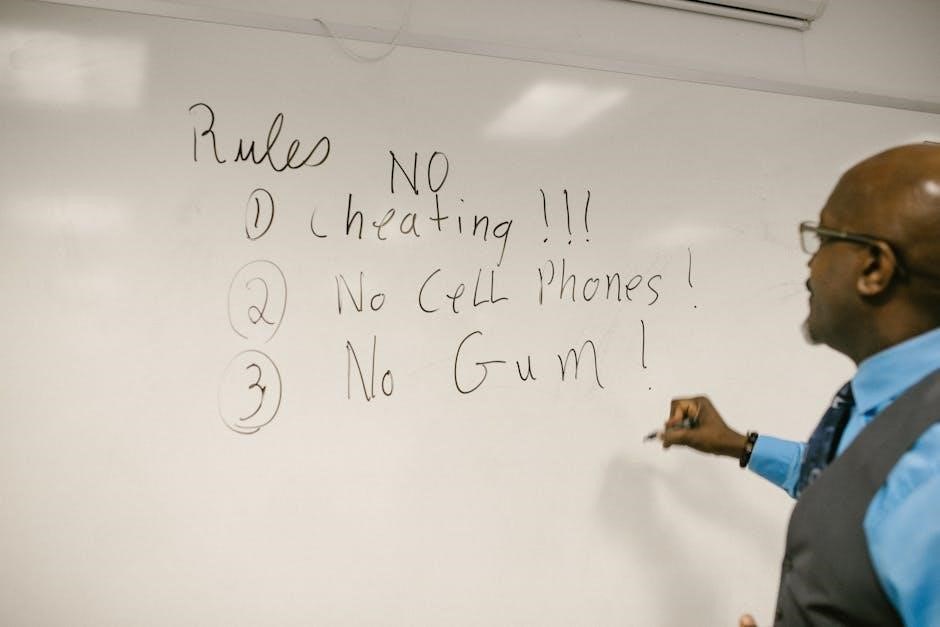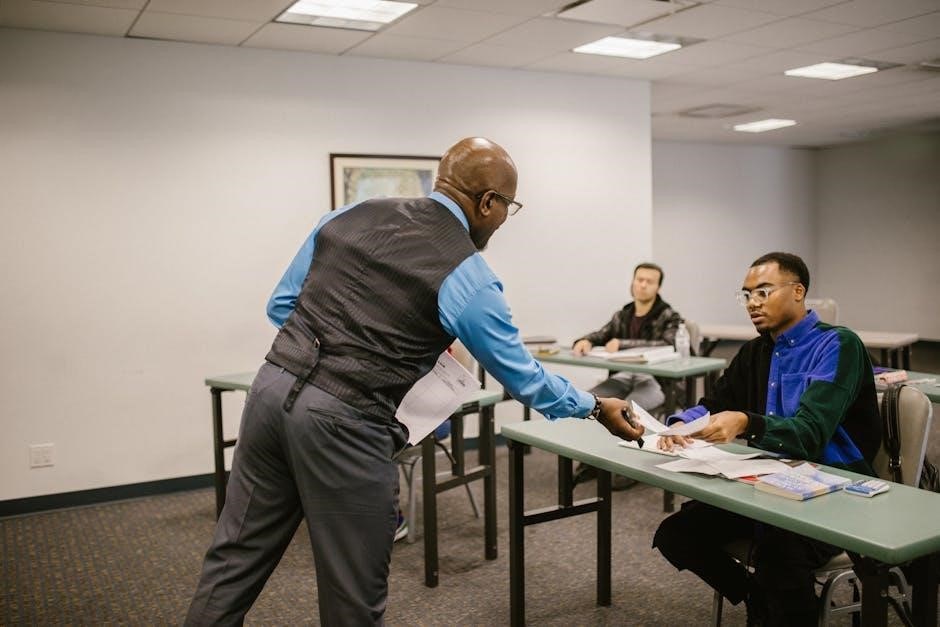Form CT-1120 is Connecticut’s corporation business tax return, used to report income, deductions, and taxes. It must be filed annually by corporations operating in the state.
1.1 Overview of the Form
Form CT-1120 is Connecticut’s Corporation Business Tax Return, used to report a corporation’s income, deductions, and taxes. It must be filed annually by businesses operating in Connecticut. The form includes sections for income, taxes, and payments, with specific lines for credits and adjustments. Attachments like federal tax returns are required. Proper completion ensures compliance with state tax laws, making it essential for accurate and timely filing.
1.2 Purpose and Importance
Form CT-1120 serves as Connecticut’s primary tool for corporations to report and pay business taxes. Its purpose is to ensure compliance with state tax laws, accurately calculate tax liabilities, and promote transparency in corporate financial activities. Timely and accurate filing is crucial for maintaining legal standing and contributing to the state’s economic stability. The form plays a vital role in upholding tax equity and supporting public programs through corporate tax contributions.
Preparing for Form CT-1120
Gather financial records, review tax laws, and organize necessary documents to ensure accurate and timely completion of the form.

2.1 Gathering Necessary Financial Documentation
To prepare for Form CT-1120, collect all relevant financial records, including your federal tax return, income statements, expense ledgers, and supporting documentation. Ensure accuracy by organizing documents chronologically and verifying totals. Include any adjustments or credits claimed on federal forms. Review Connecticut-specific deductions and credits to ensure compliance. Proper documentation ensures smooth filing and minimizes errors. Double-check for completeness before proceeding.
- Federal tax return copy
- Income statements
- Expense records
- Supporting schedules
Organize documents meticulously for accurate data entry and compliance with state requirements.
2.2 Understanding the Form Structure
Form CT-1120 is divided into key sections, including income, deductions, taxes, and payments. The form begins with basic corporate information, followed by detailed financial data. Income and deductions are reported separately, with specific lines for federal adjustments. Taxes and credits are calculated in subsequent sections, ensuring accurate compliance with Connecticut tax laws. Familiarize yourself with each part to navigate the form efficiently and avoid errors during submission.
- Corporate identification
- Income and deductions
- Tax and payment details
- Special instructions and adjustments
Understanding the layout helps in organizing data effectively and ensures compliance with state tax requirements.
2.3 Tips for Accurate Completion
To ensure accurate completion of Form CT-1120, organize all financial documents beforehand and cross-reference federal returns. Use tax software or consult a professional for complex calculations. Double-check math and ensure all required attachments are included. Pay attention to rounding rules and verify deadlines to avoid penalties. Highlight any unusual or complex items for review, and maintain a backup of all submitted data for future reference.
- Organize financial records
- Use tax preparation software
- Double-check calculations
- Verify all attachments

Key Sections of Form CT-1120
Form CT-1120 includes sections for income, deductions, taxes, and payments, along with special instructions for specific scenarios. Proper completion ensures compliance with Connecticut tax regulations.
- Income and Deductions
- Taxes and Payments
- Special Instructions
3.1 Income and Deductions
Report gross income, including federal taxable income, and list all applicable deductions. Ensure accuracy by including business expenses, depreciation, and net operating losses. Attach Schedule C if required. Specific deductions, such as those for research and development, must comply with Connecticut tax regulations. Properly document all adjustments to avoid discrepancies. Refer to federal tax return for consistency, ensuring compliance with state-specific modifications. Accuracy in this section is crucial for correct tax calculation and avoidance of penalties.
- Gross income from all sources
- Federal taxable income adjustments
- Business expense deductions
- Depreciation and amortization
3.2 Taxes and Payments
Calculate total tax liability by applying applicable credits and deductions to taxable income. Report federal taxable income adjusted for Connecticut modifications. Enter tax amounts on Line 30 and estimated payments on Line 34. Ensure accuracy in reporting PassThrough Entity credits; Rounding off to whole dollars is required for all tax amounts. Verify payment accuracy to avoid penalties. Attach supporting documentation if required. Ensure compliance with Connecticut tax regulations for proper payment reporting.
- Total tax liability calculation
- Federal taxable income adjustments
- Estimated payment reporting
- Credit applications and documentation
3.3 Special Lines and Instructions
Special lines in Form CT-1120 require careful attention. Line 30 is for total tax liability after credits. Line 34 is for estimated payments and credits. PassThrough Entity credits are reported separately. Attach Schedule K-1 and federal return copies. Ensure accuracy in reporting special deductions and credits. Follow specific instructions for rounding and calculations. Verify all entries to avoid discrepancies. Proper documentation is essential for compliance with Connecticut tax regulations. Ensure all special lines align with federal and state requirements for accurate filing.
- Line 30: Total tax liability
- Line 34: Estimated payments
- PassThrough Entity credits
- Required attachments

Filing Requirements and Deadlines
Corporations must file Form CT-1120 annually by April 15th. Extensions are available using Form CT-1120 EXT. Ensure timely submission to avoid penalties and late fees.
- Annual filing deadline: April 15th
- Extension requests: Use Form CT-1120 EXT
4.1 General Filing Information
Form CT-1120 must be filed annually by corporations operating in Connecticut. The deadline is April 15th for most corporations. Extensions are available via Form CT-1120 EXT. Ensure all required documentation, including a copy of the federal tax return, is submitted with the form. Late filings may result in penalties and interest. Timely submission is crucial for compliance with Connecticut state tax regulations.
- Filing deadline: April 15th
- Required documents: Federal tax return copy
- Consequences of late filing: Penalties and interest
4.2 Extension Requests
To request an extension for filing Form CT-1120, use Form CT-1120 EXT. This form grants an automatic six-month extension for filing the return. However, any tax due must still be paid by the original deadline to avoid penalties and interest. The extension application must be submitted by April 15th. Late filings may result in additional fees, so ensure timely submission of both the extension and the final return.
- Use Form CT-1120 EXT for extensions
- Payment due by original deadline
- Submit extension by April 15th
Combined Reporting Groups
Combined reporting groups must file specific forms annually, ensuring proper allocation and reporting of income across all group members.
5.1 Filing Requirements
Combined reporting groups must file Form CT-1120 annually, including all federal tax returns and attachments. Corporations under common ownership must report income on a combined basis to ensure accurate tax liability.

5.2 Specific Instructions
Corporations filing under combined reporting must attach federal returns and schedules. Ensure accurate identification of group members and proper allocation of income. Follow state-specific guidelines for calculating apportionment and filing deadlines to avoid penalties.

Attachments and Additional Forms
Attach federal tax returns, schedules, and supporting documents to Form CT-1120. Include additional forms as required by specific tax situations or credits claimed by the corporation.
6.1 Required Attachments
Attach a completed copy of the corporation’s federal income tax return, including all schedules and attachments. Include Form CT-1120 Schedule C and federal Schedule K-1. Submit any additional supporting documents or worksheets referenced in the form instructions. Attach Form CT-1120 ATT if amending the return. For pass-through entities, include Form CT-1120CU. Ensure all documentation aligns with Connecticut tax requirements and is properly signed and dated.
6.2 Federal Tax Return Attachments
Attach a complete copy of the corporation’s federal income tax return, including all schedules, statements, and attachments. This includes Schedule C, Schedule K-1, and any other forms referenced in the federal return. Ensure all federal documentation is accurately reflected and aligns with Connecticut tax requirements; Properly sign and date all attachments to maintain compliance with filing standards.

Rounding and Calculations
Round all amounts to the nearest whole dollar, as cents are not accepted. Ensure calculations align with federal tax return figures and Connecticut-specific adjustments.
7.1 Rounding Off to Whole Dollars
When completing Form CT-1120, ensure all monetary amounts are rounded to the nearest whole dollar. Cents are not accepted, so any fractional amounts must be adjusted. For example, $1,234.56 becomes $1,235, and $789.32 becomes $789. This applies to all sections, including income, deductions, and tax calculations. Hartford instructions specify that rounding must align with federal tax return figures. Always verify totals for accuracy before filing to avoid discrepancies.
7.2 Calculation Tips
For accurate Form CT-1120 calculations, cross-reference federal tax return figures. Use accounting software to ensure precision. Double-check math for additions and subtractions to avoid errors. Verify totals align with supporting documents. Break down complex computations into smaller steps for clarity. Ensure all credits and deductions are correctly applied. Consult the federal return for consistency in income and expense reporting. Regularly review calculations to catch discrepancies early.

Common Mistakes to Avoid
Ensure accuracy in reporting income and deductions. Verify calculations align with federal returns. Avoid rounding errors and missed deadlines. Double-check all attachments for completeness.
8.1 Error Prevention Strategies
Start by carefully reviewing the Form CT-1120 instructions. Organize all financial documents beforehand. Double-check calculations and ensure accurate data entry. Verify that all required attachments, such as federal tax returns, are included. Pay attention to deadlines and file extensions to avoid penalties. Use tax software or consult professionals for complex sections. Always review the form for completeness before submission to prevent errors and ensure compliance with Connecticut tax requirements.
8.2 Frequently Asked Questions
Q: What is the deadline for filing Form CT-1120? The deadline is typically April 15th, but extensions can be requested using Form CT-1120 EXT.
Q: Do I need to attach my federal tax return? Yes, attach a copy of your federal return, including all schedules, to Form CT-1120.
Q: How do I handle rounding? Round all amounts to the nearest whole dollar on the form.
Q: Can I file electronically? Yes, e-filing is available and highly recommended for faster processing.

Form CT-1120 is essential for Connecticut corporations to accurately report taxes. Ensure all sections are completed correctly, and utilize resources if needed for further assistance or clarification.

9.1 Final Checklist
Review all financial documents for accuracy and completeness. Verify calculations, especially rounding to whole dollars. Ensure all required attachments and federal tax returns are included. Double-check extensions if applicable and confirm submission deadlines. Seek professional help if needed. Properly sign and date the form before filing to avoid delays or penalties. Ensure compliance with Connecticut’s tax regulations for a smooth submission process.
9.2 Resources for Further Assistance
For additional guidance, visit the Connecticut Department of Revenue Services website for detailed instructions and FAQs. Utilize the 2022 Q&A on Estimated Corporation Business Tax for clarification on specific topics. Contact tax professionals or certified public accountants familiar with Connecticut tax laws. Attend tax workshops or community resources for hands-on assistance. Ensure compliance by referencing official publications and seeking help when needed to navigate complex requirements effectively.
